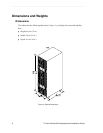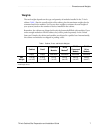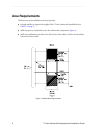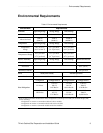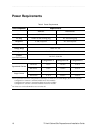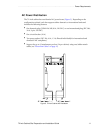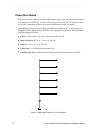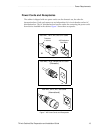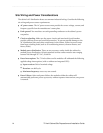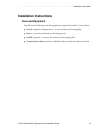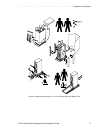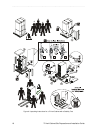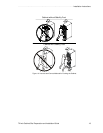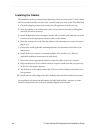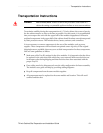. . . . . . . . . . . . . . . . . . . . . . . . . . . . . . . . . . . . . . . . . . . . . . . . . . . . . . . . . . . . . . . . . . . . . . . . . . . . . .
14 72-Inch Cabinet Site Preparation and Installation Guide
Site Wiring and Power Considerations
The cabinet’s AC distribution boxes use common industrial wiring. Consider the following
site wiring and power source requirements:
•
AC power source. The AC power source must provide the correct voltage, current, and
frequency specified on the manufacturer’s name plate.
•
Earth ground. You must have an earth grounding conductor to the cabinet’s power
receptacles.
•
Circuit overloading. Make sure the power circuits and associated circuit breakers
provide sufficient power and overload protection. To prevent possible damage to the
AC distribution boxes and other components in the cabinet, isolate its power source
from large switching loads (such as air conditioning motors, elevator motors, and
factory loads).
•
Module power distribution. There are two accessory outlets inside the cabinet for
module power distribution. All units attached to these outlets must be auto-ranging
between 180 through 257 VAC, 50-60 Hz.
•
Power Interruptions. The 72-inch cabinet and its modules will withstand the following
applied voltage interruptions (with or without an integrated UPS):
•
Input transient: 50% of nominal voltage
•
Duration: one half cycle
•
Maximum frequency: once every ten seconds
•
Power Failures. After total power failure, the modules within the cabinet will
automatically perform a power-up recovery without operator intervention, once power
is restored.



